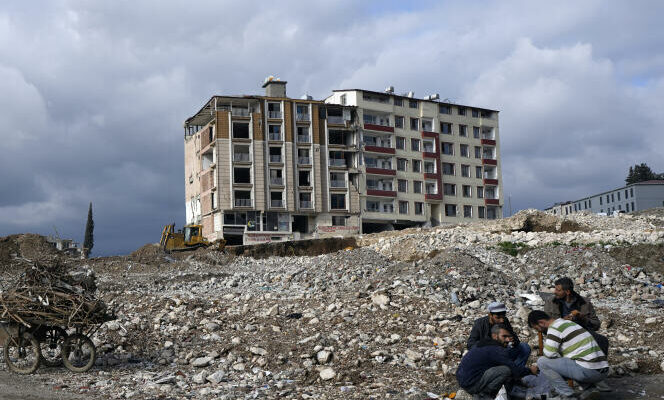A few kilometers from the city center of Antakya, the largest city in the Hatay region, in the very south of Turkey, a cemetery has been improvised on the side of the road. Hundreds of identical mounds of earth follow one another in rows. The rare tombstones invariably display the date of death as February 6, 2023. On that day, a 7.8 magnitude earthquake mourned the country. Some locations only have a serial number painted on an ordinary wooden board as an identifier.
“Forensic medicine did what it could, but there were so many bodies that not all of them could be identified,” explains Özlem Parlak. This 23-year-old communications student is from the town of Malatya, a few hundred kilometers away. After the disaster, she could have chosen to join her family, but for the past year, she has chosen to stay in Antakya. An activist in the Turkish Workers’ Party (TIP), a far-left group, she works tirelessly, with her political organization, to coordinate assistance to the population.
The panic, the smell of corpses… The memories she has of the hours following the tremors are still vivid. Of the fifty thousand victims of earthquakes recorded in the country in 2023, almost half of them would have died in Hatay, according to official figures – considered to be underestimated. This, even though the region is located nearly 200 kilometers from the epicenter. More than six thousand buildings collapsed there, 71% of buildings were damaged. Özlem Parlak admits that it is now impossible for him to return to certain districts of the city: “In Defne, in the neighborhoods of Gazi, Armutlu, Elektrik, for example. We can no longer speak of a neighborhood, moreover, it is a completely empty plain. »
Hastily hired workers
Antakya, or Antioch, in French, a thousand-year-old city, a multicultural melting pot and home to the three religions of the Book. The historic city center is now unrecognizable. Many buildings which constituted the architectural heritage of the region saw their walls crack or their roofs collapse. Essential visual landmarks in Turkey, the silhouettes of minarets have now disappeared in the region. Rare empty buildings stand in the middle of vast wastelands. The heady roar of construction machinery only ceases at dusk.
Twelve months of clearing work were barely enough to clear the thousands of cubic meters of rubble, sand and metal. In the absence of possible repairs, it is now the turn of uninhabitable buildings to be destroyed. The quantities of dust raised saturate the atmosphere and worry professional organizations which warn of the large quantities of asbestos present. Hastily hired on the side of the road, the daily workers who agree to do this thankless work are often Syrian refugees.
You have 50% of this article left to read. The rest is reserved for subscribers.
